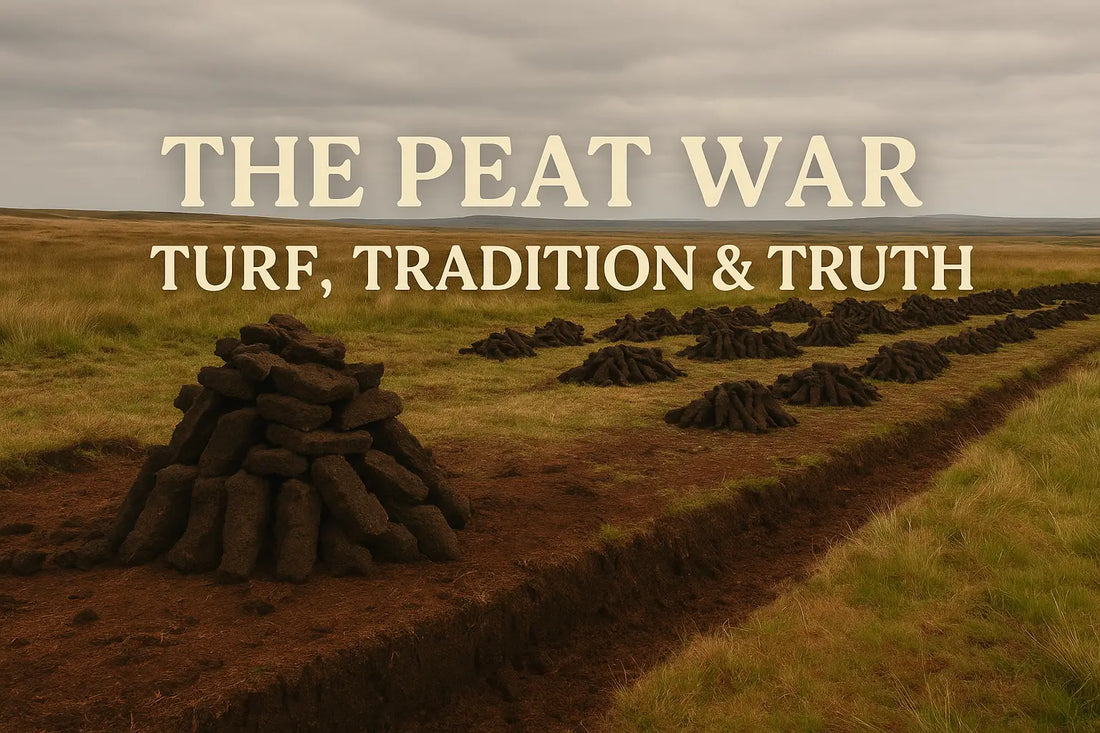
La guerre de la tourbe : territoire, tradition et vérité
Partager
La tourbe : un combustible pour les foyers, la culture et les moyens de subsistance
Depuis des générations, la tourbe est essentielle à la vie rurale : elle permet de chauffer les maisons, de faire bouillir l’eau et de nourrir les familles. Couper la tourbe est plus qu’un droit ; c’est un héritage culturel. Mais face à la pression croissante d’organismes environnementaux comme l’Agence de protection de l’environnement (EPA) et les autorités de réglementation de l’UE, ce mode de vie est désormais considéré comme une activité criminelle.
Le choc : l'EPA contre l'Irlande rurale
L'Agence de protection de l'environnement signale l'extraction annuelle d'environ 300 000 tonnes de tourbe, en grande partie illégale et exportée pour l'horticulture. La réaction ? « Dégâts catastrophiques », « activités illégales » et répression de la coupe de tourbe, même sur les terrains privés. Les critiques affirment que cette mesure vise à imposer un contrôle centralisé et à marginaliser les communautés rurales.
Tradition contre écologisme et pouvoir
La tourbe n'est pas seulement un combustible : elle est synonyme d'identité, de résilience et d'indépendance. Les exploitants de tourbe se considèrent comme les gardiens des tourbières, mais estiment que les politiques environnementales ignorent leurs besoins. Face à la réduction progressive de l'exploitation de la tourbe pour la production d'énergie par Bord na Móna, les petits exploitants ont pris le relais ; or, eux aussi sont désormais menacés de sanctions.
Tonte du gazon aujourd'hui et demain
La coupe de gazon domestique reste autorisée, mais la réglementation se durcit. Les interdictions urbaines de feux de gazon, les taxes carbone et les interdictions locales la rendent plus restrictive et plus coûteuse. Ses partisans, comme le député Michael Fitzmaurice, soulignent qu'elle demeure essentielle dans de nombreuses régions rurales, tant sur le plan culturel qu'économique.
Le tableau d'ensemble
Ce conflit territorial reflète un bras de fer plus vaste :
Obligations de l’UE : La renaturation et la protection des tourbières surélevées sont des objectifs clés de la directive Habitats – des violations ont déjà donné lieu à des affaires devant la Cour de justice de l’Union européenne.
Engagements climatiques : l’Irlande doit réduire drastiquement ses émissions, et les tourbières sont des puits de carbone essentiels.
Pourtant, les habitants des zones rurales ripostent, dénonçant un traitement injuste et le manque d'alternatives.
À la recherche d'une voie médiane
Plusieurs mesures pourraient permettre de combler ce fossé :
Dispositifs d'indemnisation pour les coupeurs de gazon sur les terres protégées.
Investissement dans des solutions alternatives abordables : géothermie, rénovation énergétique, chauffage urbain.
Programmes de crédits carbone (par exemple, le modèle MoorFutures) récompensant la restauration des tourbières.
Des initiatives d’éducation publique – en particulier auprès des jeunes – pour mettre en lumière la valeur des tourbières.
Conclusion
L’Irlande se trouve à la croisée des chemins : protéger une tradition séculaire et son économie rurale, ou préserver des écosystèmes essentiels et lutter contre le changement climatique. La solution idéale respecte à la fois les droits des communautés rurales et l’impératif de protéger l’environnement.
